LaTeX templates and examples — Math
Recent
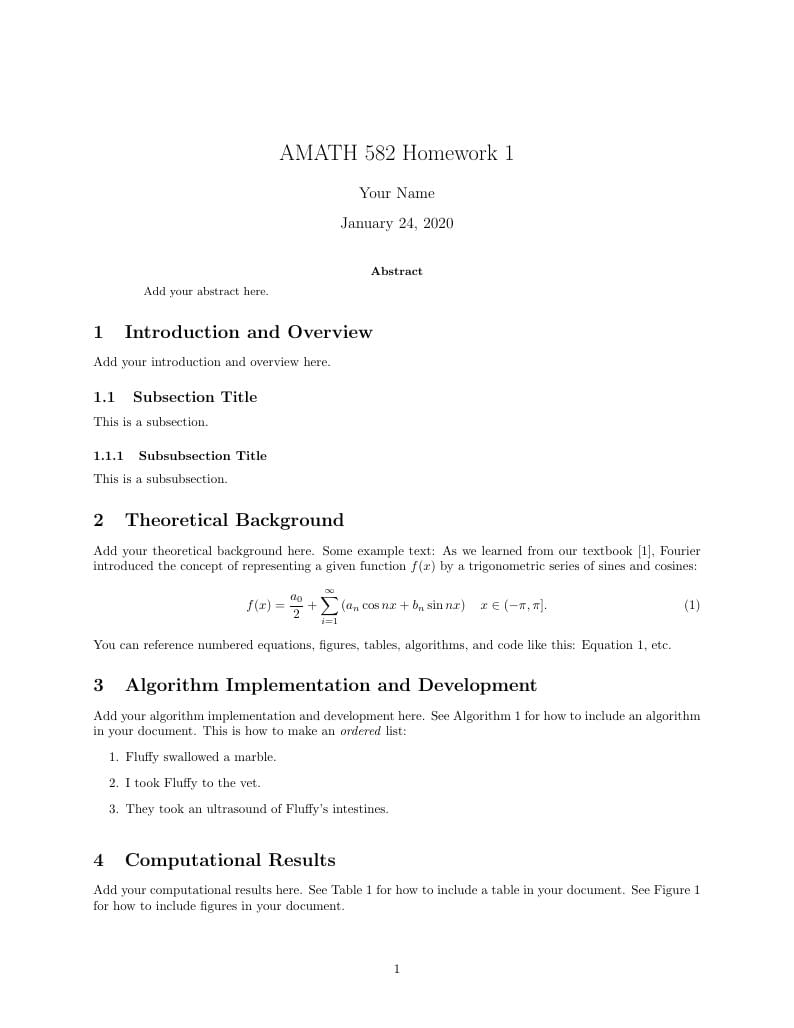
Homework template for UW AMATH 582 Winter Quarter 2020
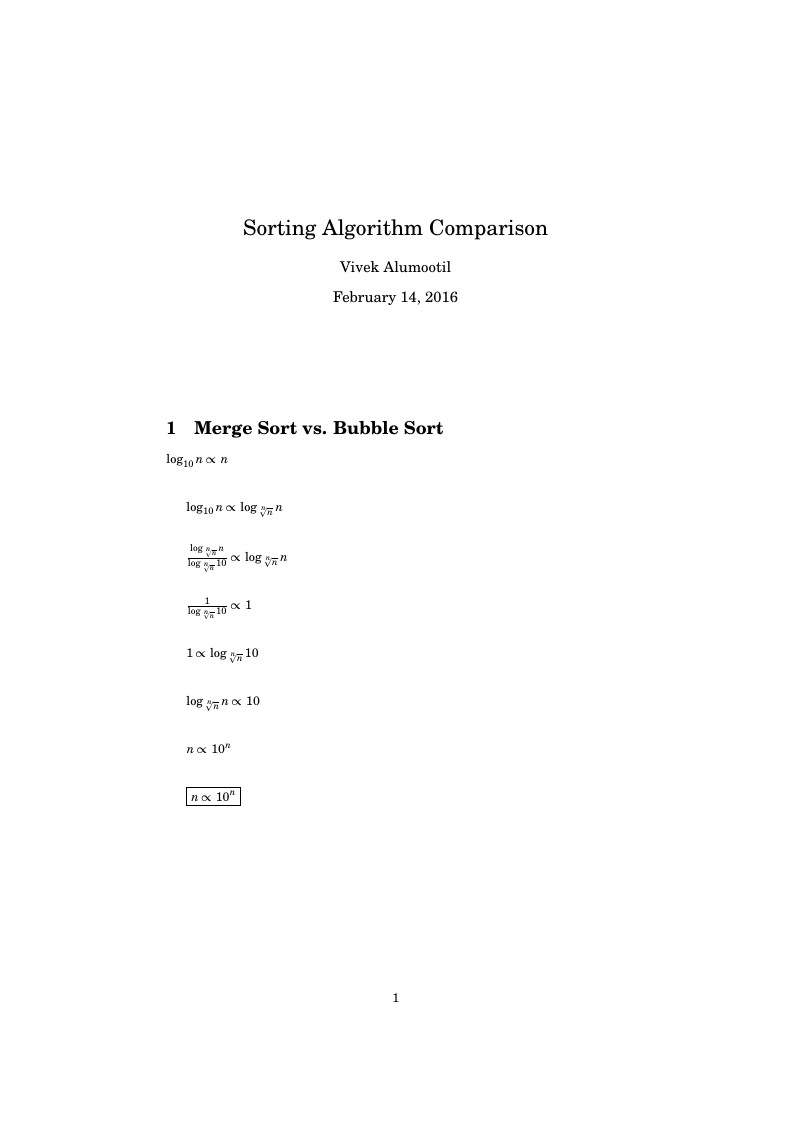
Merge Sort vs. Bubble Sort

Something I wrote up to help myself understand the Laplace Transform, what makes it so useful, and most importantly how to derive the Laplace Transform from those useful properties.

Resumo das Regras para a Dedução Natural Material de aula da disciplina MAC0239 - Introdução à Lógica e Verificação de Programas (Agosto de 2015)
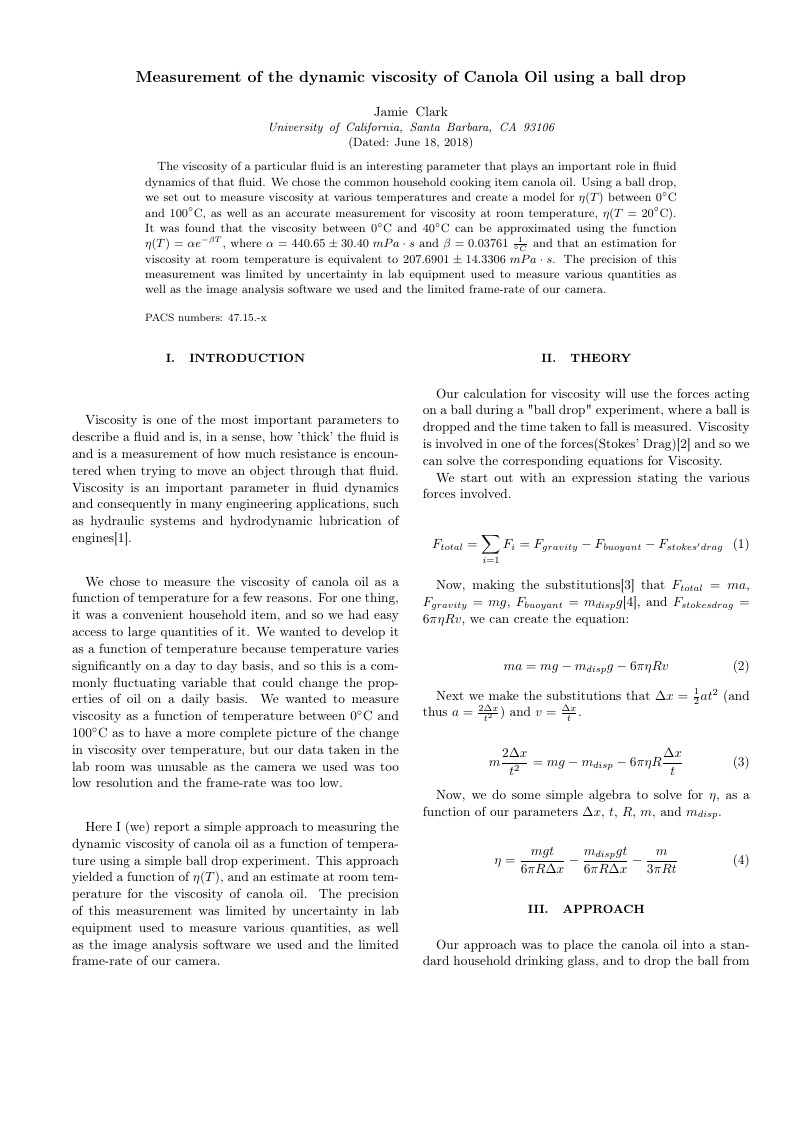
The viscosity of a particular fluid is an interesting parameter that plays an important role in fluid dynamics of that fluid. We chose the common household cooking item canola oil. Using a ball drop, we set out to measure viscosity at various temperatures and create a model for the viscosity of canola oil as a function of temperature, as well as an accurate measurement for viscosity at room temperature. It was found that the viscosity between 0 and 40 degrees Celsius can be approximated using an exponential function and that an estimation for viscosity at room temperature was not very difficult to obtain. The precision of this measurement was limited by uncertainty in lab equipment used to measure various quantities as well as the image analysis software we used and the limited frame-rate of our camera.
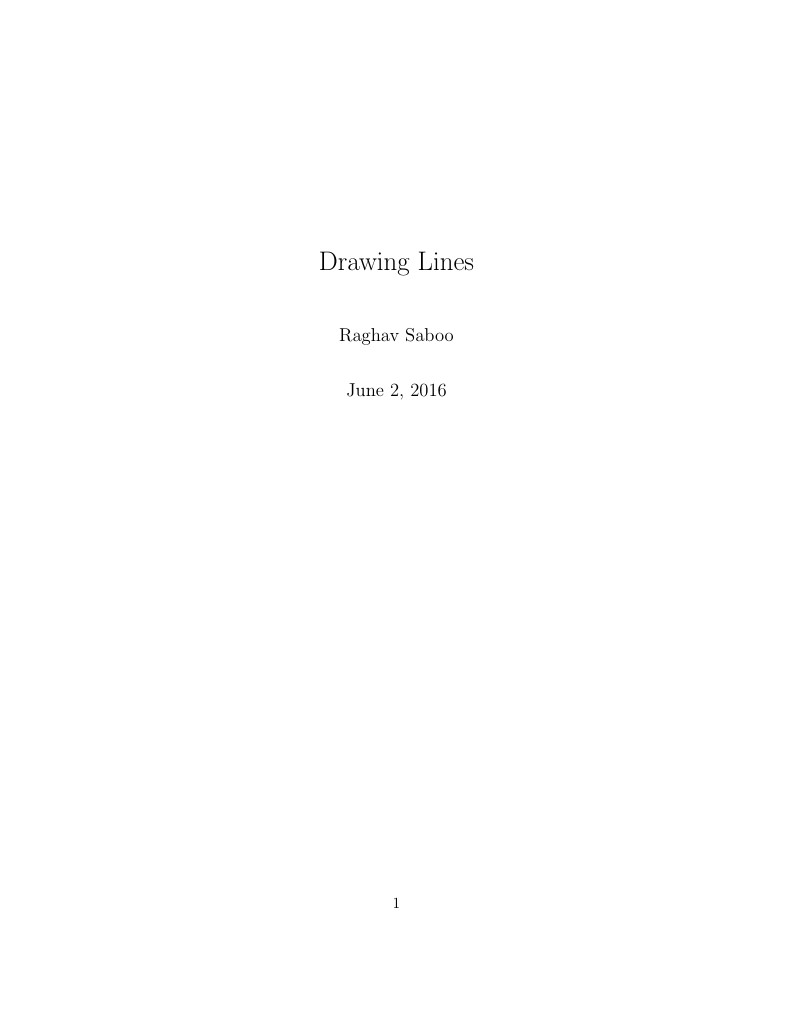
Notes on Machine Learning.
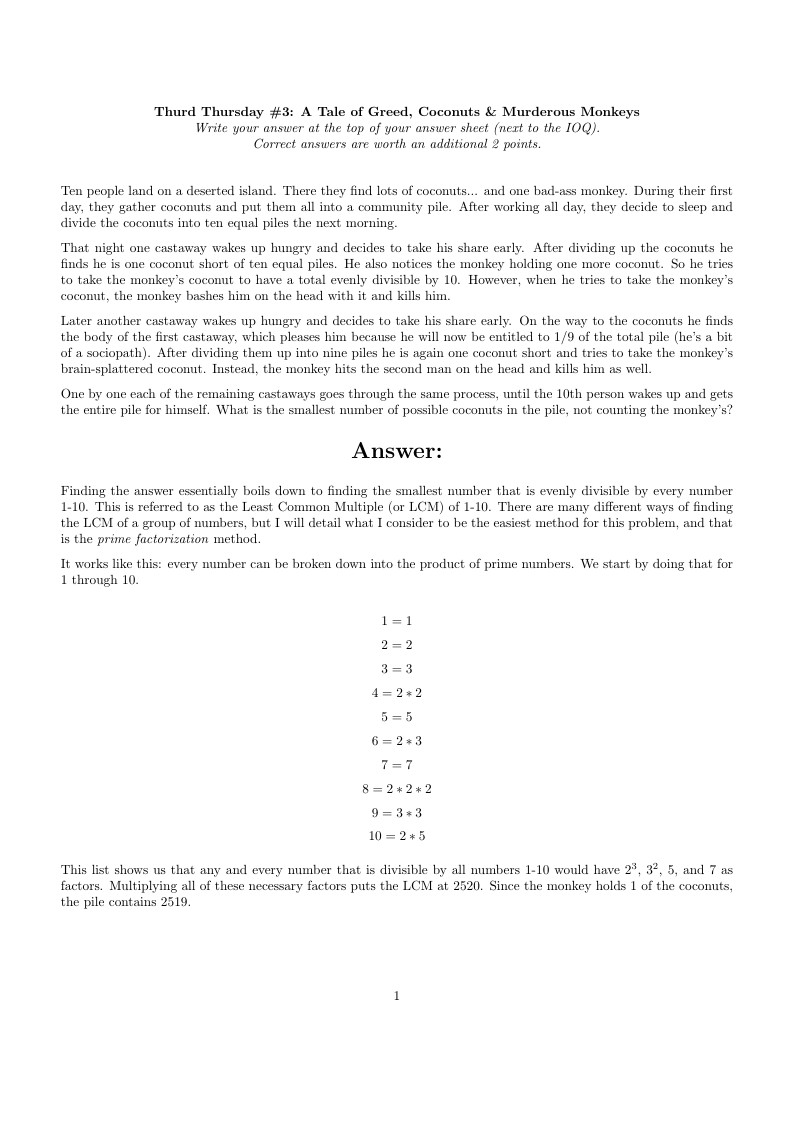
A logic/math puzzle and solution.
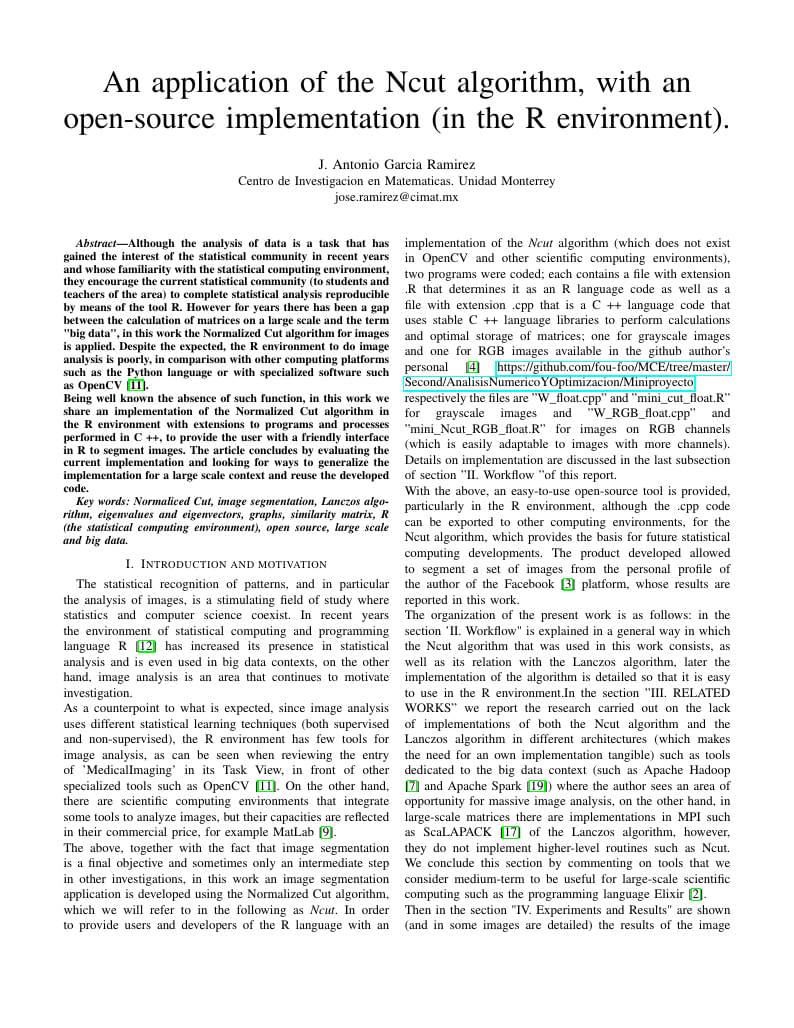
Although the analysis of data is a task that has gained the interest of the statistical community in recent years and whose familiarity with the statistical computing environment, they encourage the current statistical community (to students and teachers of the area) to complete statistical analysis reproducible by means of the tool R. However for years there has been a gap between the calculation of matrices on a large scale and the term "big data", in this work the Normalized Cut algorithm for images is applied. Despite the expected, the R environment to do image analysis is poorly, in comparison with other computing platforms such as the Python language or with specialized software such as OpenCV. Being well known the absence of such function, in this work we share an implementation of the Normalized Cut algorithm in the R environment with extensions to programs and processes performed in C ++, to provide the user with a friendly interface in R to segment images. The article concludes by evaluating the current implementation and looking for ways to generalize the implementation for a large scale context and reuse the developed code. Key words: Normaliced Cut, image segmentation, Lanczos algorithm, eigenvalues and eigenvectors, graphs, similarity matrix, R (the statistical computing environment), open source, large scale and big data.

This is a report on the Dijkstra's Algorithm
\begin
Discover why over 20 million people worldwide trust Overleaf with their work.